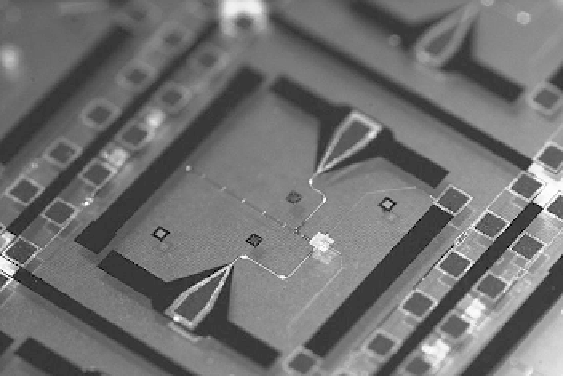Geoscience Reference
In-Depth Information
it is likely that improvements in silicon-wafer-based computers will produce diminishing returns.
Heat generation, materials shortages and several other factors will contribute to the end of the CPU
chip as we know it (See, 2014). However, well before 2061, it is believed that the first quantum
computers will be more readily available. Quantum computers are nanoscale technologies that use
the spin state and spin space to exploit quantum mechanical phenomena, such as superposition and
entanglement, to perform operations on data. Although quantum computing is in its infancy, NASA
and Google have formed a partnership to invest in the first commercial quantum computer devel-
oped by the Canadian company D-Wave. The computer, which will cost 15 million USD, will reach
speeds 3600 times greater than conventional computers (Jones, 2013). Moreover, quantum algo-
rithms already exist that run exponentially faster than any possible probabilistic classical algorithm.
Quantum computing requires a rethinking of Boolean logic, based on q-bits or qubits. A quan-
tum computer (Figure 19.9) is exponentially more complex than a classical computer with the same
number of bits because describing the state of
n
qubits requires 2
n
complex coefficients. Measuring
the qubits would produce a classical state of only
n
bits, but such an action would also destroy the
quantum state. Instead, a quantum computer operates by modifying qubits with a fixed sequence
of quantum logic gates called a quantum algorithm. Theoretically, any problem solvable with a
quantum computer can also be solved with a traditional computer. The difference is speed, and in
a few known instances, quantum computers could make computationally impossible or intractable
problems solvable. A 300 qubit computer is capable of describing 2
300
states, a value of about 10
90
,
exceeding the number of atoms in the known universe. Computing capacity and storage would be
immense, and computation would be extremely fast, even for difficult problems. Pseudorandom
number generators would yield to true randomness. If quantum computers are also small as implied
by the promise of nanotechnology, then 2061 could have available computing power for almost
everything that humans use.
GeoQuantumComputation would be a world in which all objects could compute. The
Internet
of things
could become an Internet of intelligent things. Coupling computing power with nano-
machines such as actuators and motes would reinvent computing itself. With millimetre accu-
racy positioning within microseconds, even every molecule could have memory and network
connections and perform operations. Steel girders could measure and report their level of stress;
nanorobots could examine the human circulatory system from the inside, recognising health
problems as they develop; and every stem of wheat could be monitored for its health, moisture
and insolation. A paper (or plastic) map could be its own digital analogue! Perhaps at some time
FIGURE 19.9
Qubit coupled to a resonator. (From Erik Lucero, Quantum Research Laboratory, University
of California, Santa Barbara, Santa Barbara, CA.)

